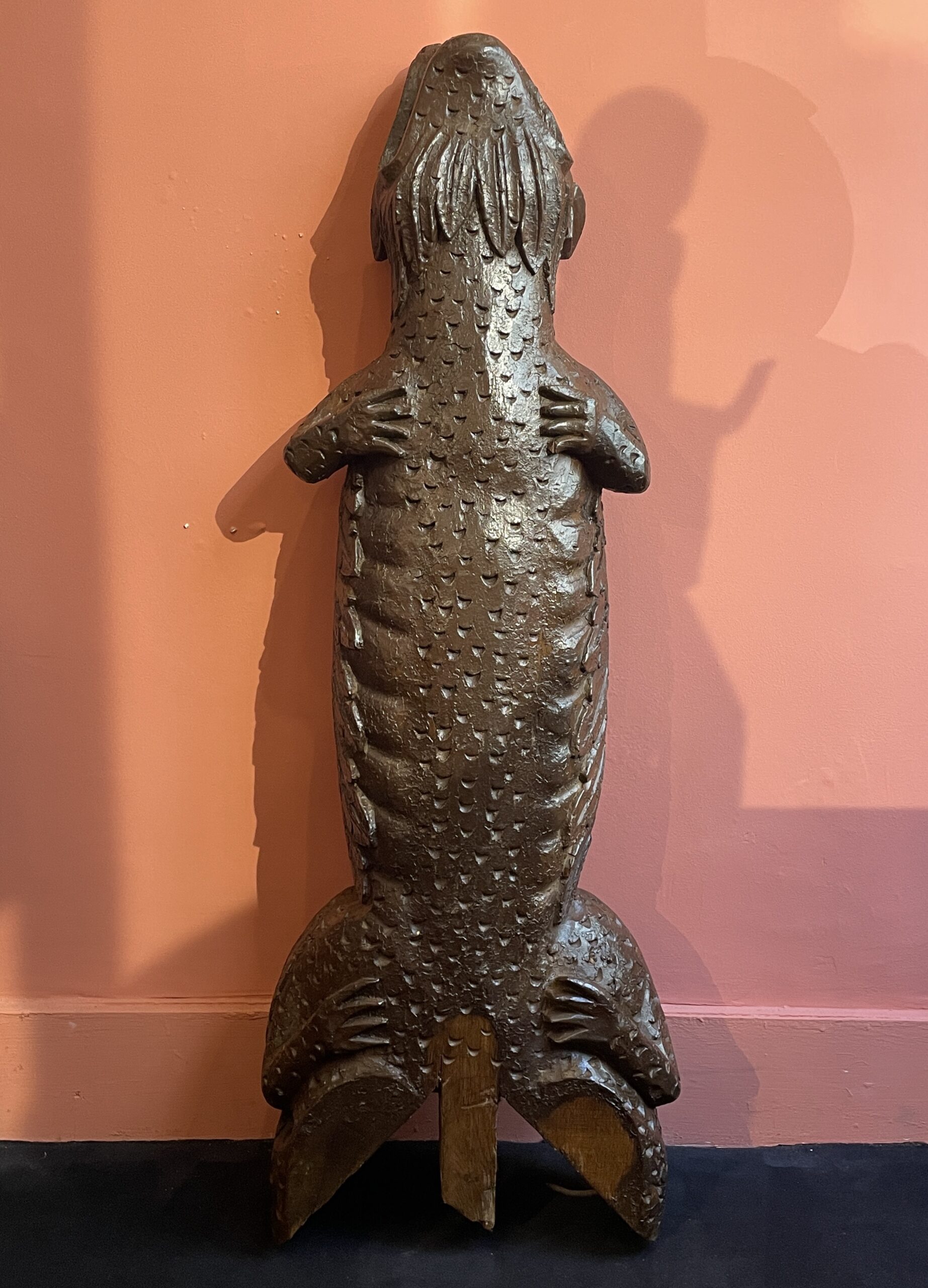Description
This carved oak woodwork was probably placed on the facade of the house, close to the roofing framework of a Norman house. The sculptor had depicted the salamander front-view in a stylised manner. The scales and the neck fringes are particularly detailed. The head was in the direction of the floor.
According to the popular belief, Salamander was living in the fire, from which the animal found life and protection. It was the symbol of the fire guardians commissioned by God himself. The popular belief, as old as Aristotle writings, also says that the salamander could extinguish fire. Thus we can easily understand why it was chosen to be depicted on the facade of a house.
Moreover, Charles de Valois, duke of Angoulème (d. 1496) used the salamander in fire, as his emblem. His son, François I, king of France, kept this emblem and added NUTRISCO ET EXTINGO meaning “ I feed and I extinguish’. We can see salamanders depicted on different royal palaces. In the city of Lisieux, we can see the “Salamander Mansion ” from the 16th century, where a carved woodwork Salamander is running on the roofing framework.

